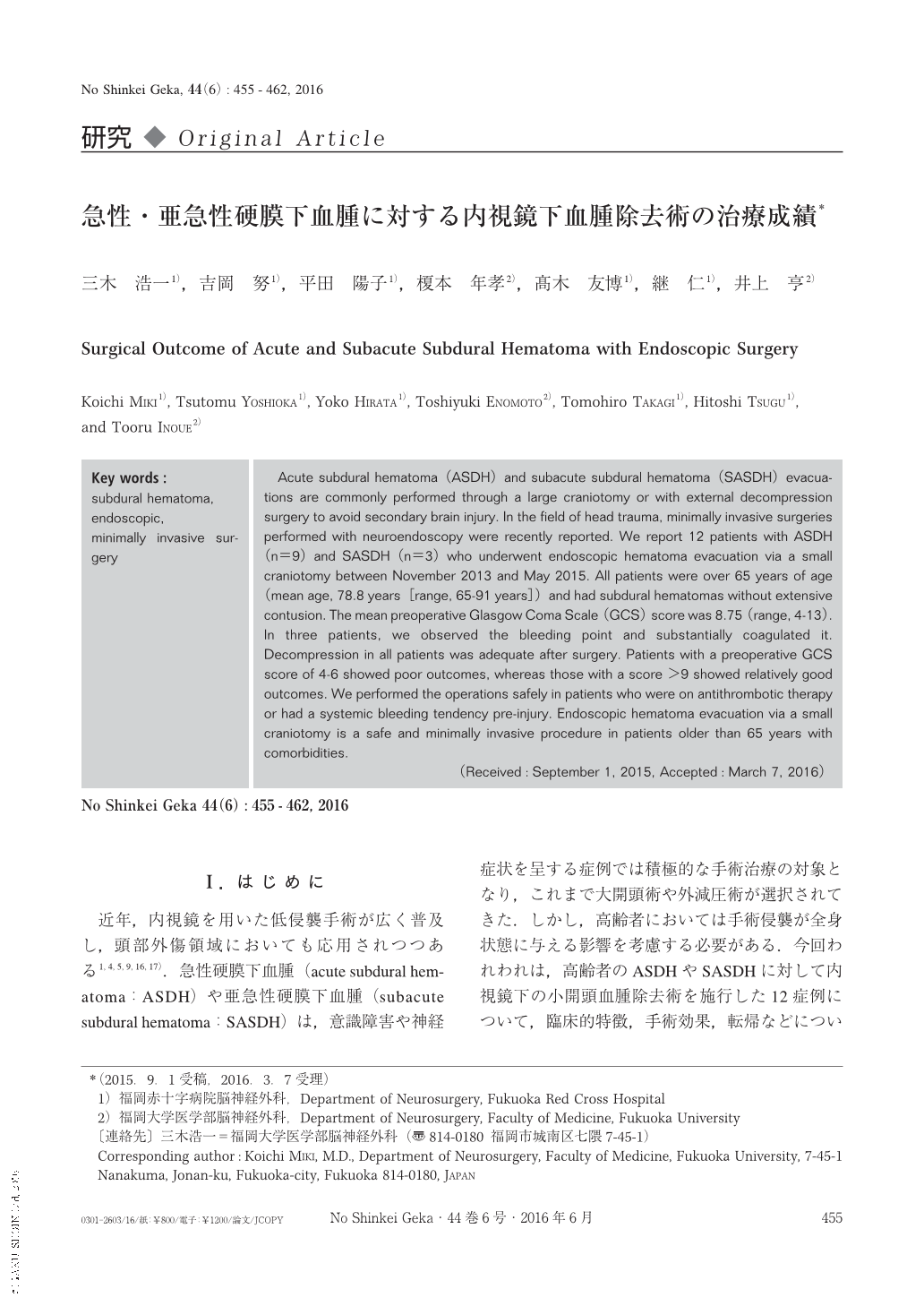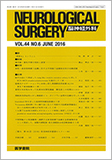Japanese
English
- 有料閲覧
- Abstract 文献概要
- 1ページ目 Look Inside
- 参考文献 Reference
Ⅰ.はじめに
近年,内視鏡を用いた低侵襲手術が広く普及し,頭部外傷領域においても応用されつつある1,4,5,9,16,17).急性硬膜下血腫(acute subdural hematoma:ASDH)や亜急性硬膜下血腫(subacute subdural hematoma:SASDH)は,意識障害や神経症状を呈する症例では積極的な手術治療の対象となり,これまで大開頭術や外減圧術が選択されてきた.しかし,高齢者においては手術侵襲が全身状態に与える影響を考慮する必要がある.今回われわれは,高齢者のASDHやSASDHに対して内視鏡下の小開頭血腫除去術を施行した12症例について,臨床的特徴,手術効果,転帰などについて検討を行った.
Acute subdural hematoma(ASDH)and subacute subdural hematoma(SASDH)evacuations are commonly performed through a large craniotomy or with external decompression surgery to avoid secondary brain injury. In the field of head trauma, minimally invasive surgeries performed with neuroendoscopy were recently reported. We report 12 patients with ASDH(n=9)and SASDH(n=3)who underwent endoscopic hematoma evacuation via a small craniotomy between November 2013 and May 2015. All patients were over 65 years of age(mean age, 78.8 years[range, 65-91 years])and had subdural hematomas without extensive contusion. The mean preoperative Glasgow Coma Scale(GCS)score was 8.75(range, 4-13). In three patients, we observed the bleeding point and substantially coagulated it. Decompression in all patients was adequate after surgery. Patients with a preoperative GCS score of 4-6 showed poor outcomes, whereas those with a score >9 showed relatively good outcomes. We performed the operations safely in patients who were on antithrombotic therapy or had a systemic bleeding tendency pre-injury. Endoscopic hematoma evacuation via a small craniotomy is a safe and minimally invasive procedure in patients older than 65 years with comorbidities.

Copyright © 2016, Igaku-Shoin Ltd. All rights reserved.


